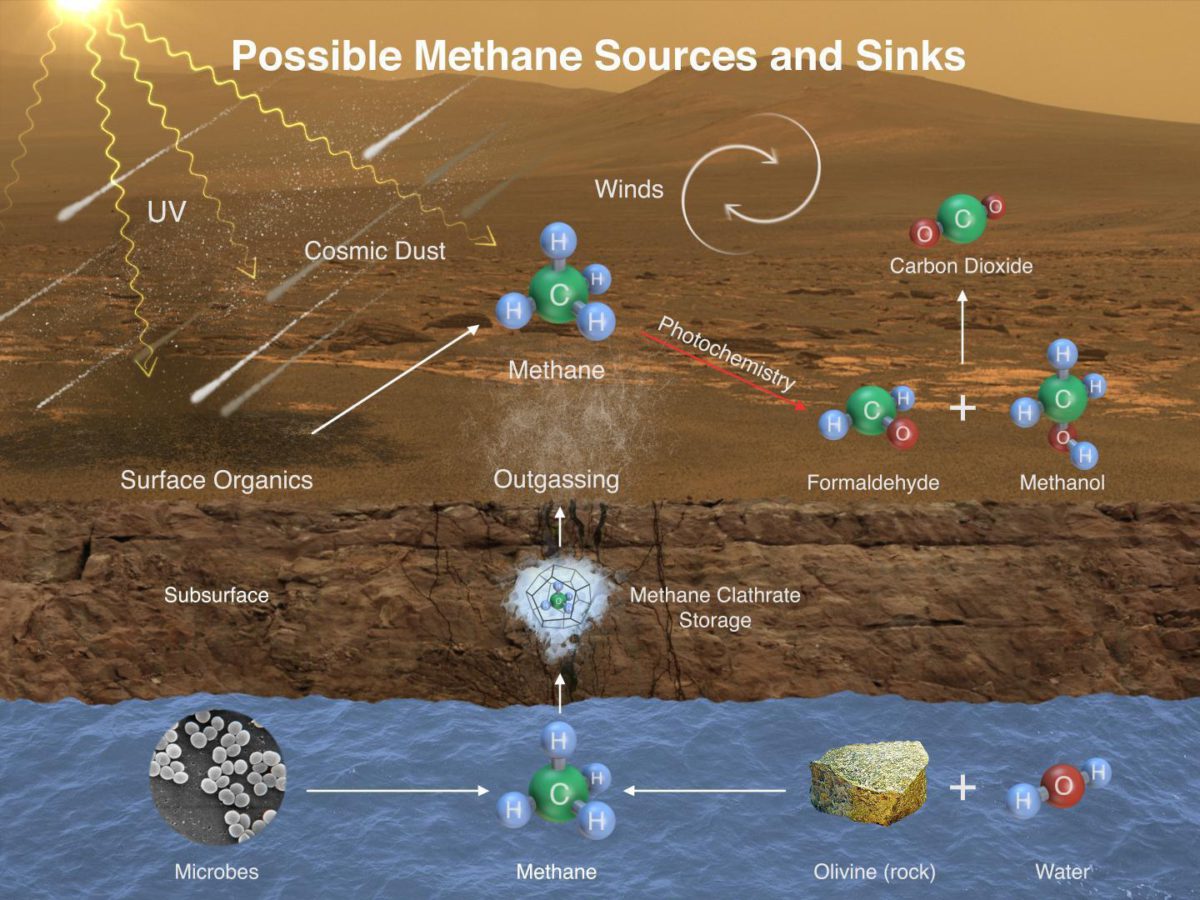Possible sources and sinks for methane on Mars

Winds on Mars can quickly distribute methane coming from any individual source, reducing localized concentration of methane. Methane can be removed from the atmosphere by sunlight-induced reactions (photochemistry). These reactions can oxidize the methane, through intermediary chemicals such as formaldehyde and methanol, into carbon dioxide, the predominant ingredient in Mars' atmosphere. NASA / JPL / SAM-GSFC / U. Michigan


 Explore Worlds
Explore Worlds Find Life
Find Life Defend Earth
Defend Earth

